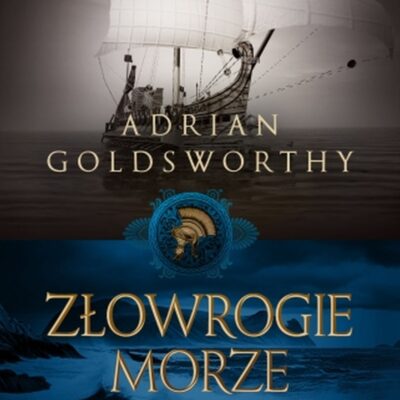The book “The Encircling Sea” by Adrian Goldsworthy is the second volume in a new series by the famous British historian. This time, the main character Flavius Ferox is stationed in Vindolanda and, together with other soldiers, he has to face a mysterious threat that attacks from the sea. The book was published in Poland by REBIS publishing house.
As in the first part of the series, the main character is Ferox, who in this volume will spend a lot of time far beyond the borders of Roman Britain – including the Scottish islands or Ireland (ancient Hibernia). As the author himself points out, Ferox and his companion Vindex are completely fictional characters. What certainly delights is the fact that in his novel the author uses characters known to us from history or records, whose personalities were discovered, among others: on wooden tablets in Vindolanda. In ancient Rome, writing was usually done on wooden tablets covered with wax. When writing with a stylus, they sometimes left marks on the wood, which, thanks to the swampy terrain, have been preserved to this day. The scratches on the wood allow us to recreate the message and understand what camp or social life was like.
For example, the well-known name of Sulpicia Lepidina, who was invited to a birthday party by a certain Claudia Severa. Sulpicia was the wife of the prefect of the Batavian cohort – Flavius Cerialis – and this proves how extensive interpersonal relations were in the camp and in the settlements near the forts. Of course, the author allowed for various threads in the plot: from the impossible love between Ferox and Sulpicia, to fights on the distant islands of Scotland.
As the author himself points out, Vindolanda is a real treasure trove of knowledge about ancient Rome. So far, over five and a half thousand pairs of shoes have been discovered in the camp itself. The fort itself was rebuilt many times, and nearby there was a civilian settlement (vicus) where civilians and soldiers’ families lived.
The action takes place in 100 CE. As the author points out, in Cumbria – today’s county in north-west England – an impressive network of towers and outposts was actually built, which were probably intended to defend the province from the Irish Sea. The author used this motif to create the image of the “night people” who attacked the coast of Britain. The author, based on the notes of the Roman writer – Tacitus, placed pirates in the plot that Ferox and his companions must deal with.
As in the previous part, the reader receives an overview map of northern Britain with the marking of Roman forts, and at the end of the work there is a glossary and a historical note from the author, which helps to understand the plot, historical background and, above all, the author’s motivations and decisions.
To sum up, just like the first part, the next part of the story is at a high level and presents us with the world of ancient Britain and Ireland in an interesting way. I highly recommend!


